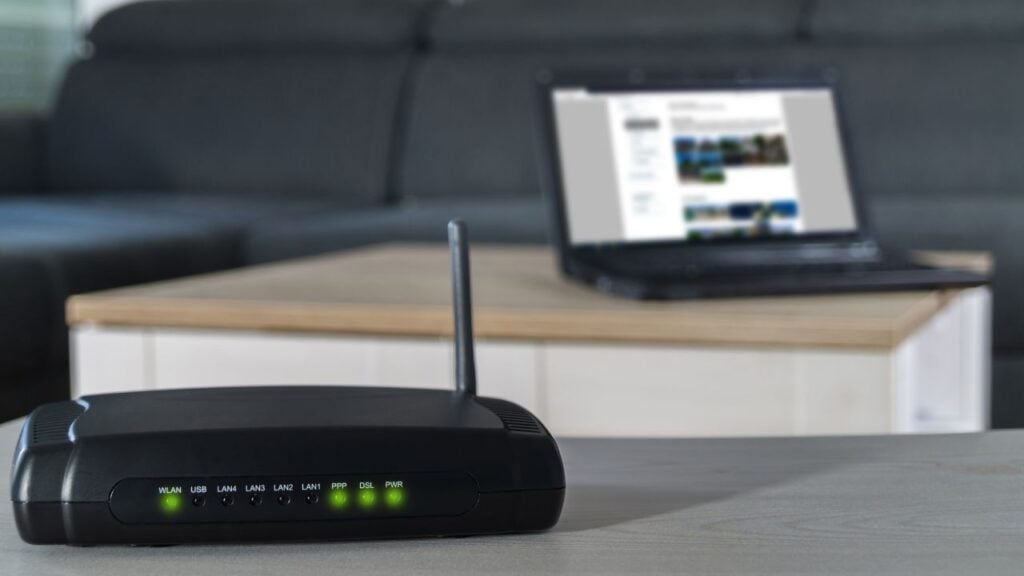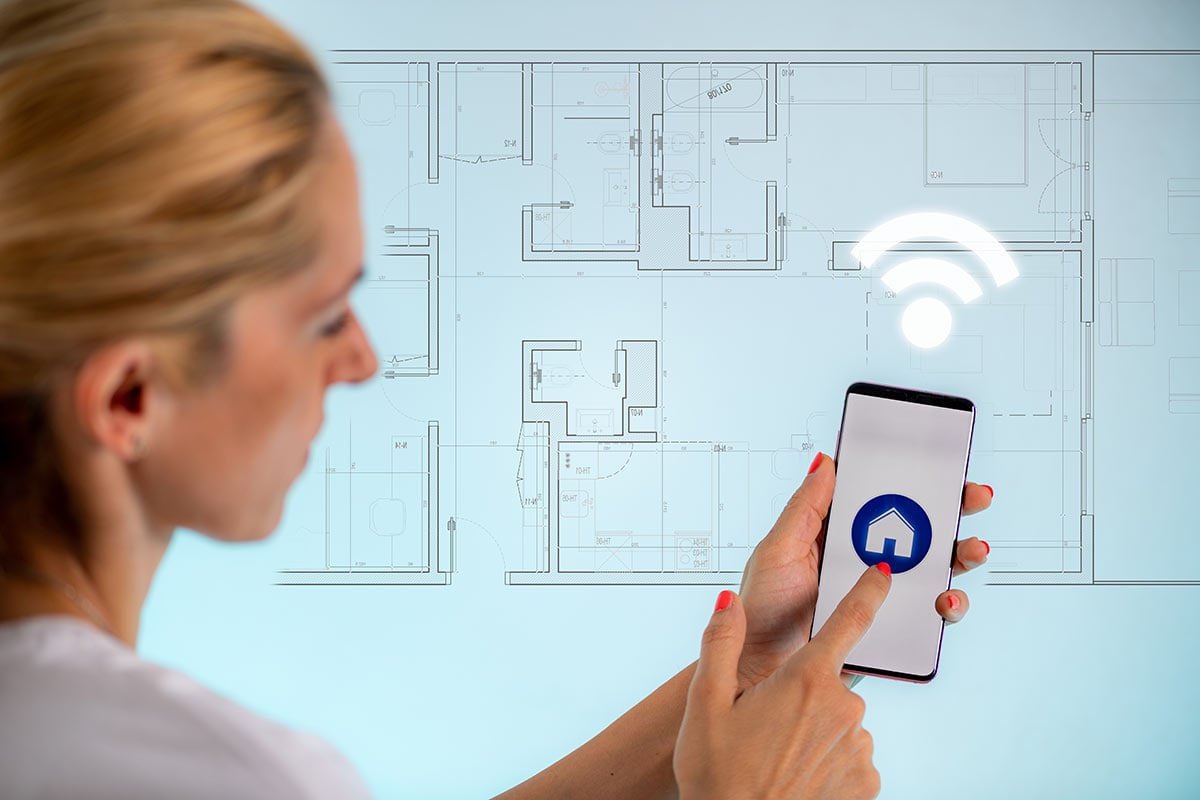What is the ideal location for a WiFi router?
Table of Contents

Some tools can help you find the ideal location for a WiFi router to enjoy a better connection
Technological advances have transformed virtually every sphere of everyday life, both at work and socially. Even so, connection problems are still the order of the day. In many homes and businesses, the signal is not strong enough to reach all devices, significantly slowing down internet browsing. And although at first, you might think that the solution is to hire more power or incorporate an amplifier, sometimes the answer is simpler. It may simply be that the ideal location for the WiFi router has not been found.
In many cases, the router tends to be placed in empty spaces where there is a free power socket, next to the cable or fiber connection. Or even in the area that, at first glance, seems most suitable. However, this decision is not always considered, without taking into account that it will have a great influence on the quality of the connection.
Countless factors can affect the signal strength, from the design of the house or installations to the obstacles to be overcome along the way, and the distance between devices… However, if the right tools are used, finding the ideal location for a WiFi router does not have to be complicated.
What obstacles can affect WiFi?
WiFi emissions travel via radio waves in the 2.4 GHz, 5 GHz, and 6 GHz frequency bands. Depending on the WiFi version used, such as WiFi 6 or WiFi 7, the data is sent in different modulations that can affect the range.
At lower frequencies, such as 2.4 GHz, emissions tend to be more robust with standard power. In ideal conditions in an open space, the signal can reach further. And even if constructive elements are introduced along the way, penetration is usually good. The reason? Lower-frequency radio waves are less attenuated when passing through materials or floors.
In buildings, many constructive elements contribute to signal impairment. Lifts are one of the most prominent due to their metallic structure. Walls made of dense materials such as brick also affect WiFi, as do double walls, which are thicker and often have intermediate insulation.
In general, the impact of doors on the signal is less than that of walls. However, if they are made of solid wood or have some reinforcement, they may significantly reduce the impact. Windows do not have much impact, especially if they do not have metal coverings, as glass is one of the least signal-damaging materials. Finally, the impact of cabinets and other furniture is similar to that of doors and windows.
However, other problems sometimes coexist. And even if you have found the ideal location for a WiFi router, you may still experience outages, drops, or slow speeds.
In these cases, the cause may lie in configuration faults or even the fraudulent presence of intruders such as neighbors who may be stealing WiFi and bandwidth. Fortunately, this can be easily remedied. Simply review the settings to check which users are connected and strengthen security with more robust parameters.
How far away should the router be located?
Typically, an RSSI signal strength level above -70 is usually a sign of good coverage. This translates into a satisfactory browsing experience where, for example, video calls will not be dropped.
But what is the recommended distance that end devices should be placed from the router? If they need to be closer than one meter to function optimally, the problem has not been solved.
In the 2.4 GHz frequency bands, coverage is generally better at a greater distance from the router. In the case of the 5 GHz or 6 GHz bands, on the other hand, it is necessary to be closer to maintain a good signal level.
However, it is important to bear in mind the use that each user will make of it. If people are going to use WiFi to watch YouTube, make video calls, browse the internet, or check email, stratospheric speeds are not necessary either, as they are not being used to their advantage.
However, if internet users are far away from the router, WiFi packets are more likely to arrive corrupted at the receiver, which will have to request them again. Data will be delayed, which increases latency and could cause problems for more demanding tasks such as smooth online gaming.
Also, when choosing the ideal location for a WiFi router it is important to remember the 30 centimetre rule. This is a theory that advocates leaving this minimum distance, to prevent the device from corrupting the signal strength and to encourage an even distribution of the signal.
How to choose the ideal location for a WiFi router?

There is no standard answer to this question. It all depends on the spatial layout of the installation and the intended use of the WiFi.
In single-story premises or flats, it is best to place it in the center. With one exception. If they are too large, it is preferable to locate them at one end, installing a repeater, an extender, or a WiFi mesh system on the opposite side to serve the entire space.
On the other hand, if there are several floors, you should be careful not to have one router above or below another, also alternating their channel configuration. In this way, they will not interfere or overlap with each other, ensuring a smooth roaming experience.
In some cases, the ideal location for a WiFi router has already been found, but the problem lies with the device, which does not transmit with sufficient power or lacks integrated antennas. In these situations, the simplest and cheapest solution to improve coverage is to incorporate an access point connected by cable to the router, first deactivating the router’s WiFi.
Antennas, on the other hand, are usually omnidirectional. What does this mean? If they are positioned vertically, their direction of emission takes on a doughnut shape. The antenna works like a hole: it emits sideways, but not upwards or downwards.
For this reason, if the access point is placed on a half-height piece of furniture, it is best to position the antennas vertically to facilitate signal distribution. On the other hand, if the access point is on the floor or the ceiling, it is advisable to tilt the antennas slightly, orienting the donut towards the areas where the devices are located.
Tools to find the ideal location for a WiFi router
There are several ways to find the ideal location for a WiFi router. One of the most popular is, at the same time, one of the most rudimentary: move your mobile phone around the rooms and check how the signal strength varies. If you detect areas where coverage is poor, you can try moving the router and then check if this solves the connection problems.
But there are also more comprehensive tools that provide more accurate information. Intuitive, easy-to-use tools that are suitable for professional use, such as our software Wi-Fi Heatmaps. A program that can be used free of charge and with which it is possible to make theoretical planning and measurements on a map or satellite images.
With this plan, users can pinpoint the position of the router or access point, detailing the site plan and building elements, to obtain a simulation of the coverage and signal levels. They can then move the router around the simulation until the desired levels are reached. Or, if this is not enough to cover the entire installation, add repeaters or a WiFi mesh system.
These kinds of solutions are very common when the space is too large or when the construction elements produce a very considerable attenuation of the signal. In any case, the best alternative is usually the placement of a wired access point to the router, as this does not lead to a loss of speed and does not affect the transparency of the communication.
Once the theoretical planning with the ideal location for a WiFi router is available, it is time to start taking real measurements. The heatmap allows users to discover the actual coverage of the access point and to make sure that it meets expectations, as the simulated theoretical model does not always completely match reality.
If the signal reaches all the desired corners, the problem has been successfully solved.
